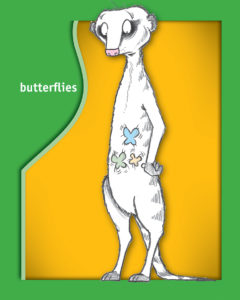You could say that social and emotional literacy is the heroic journey from the amygdala to the frontal lobe. A very short distance when measured in terms of the physical brain but a life-long journey in terms of developing impulse control, building respectful relationships, developing our principles and values, and reaching our full potential as human beings — emotionally, socially and spiritually.
While developing social and emotional literacy is life-long learning, the foundations are best laid in early childhood—defined by UNESCO as birth to eight—when remarkable learning is taking place and brain development is at its peak. Young children are highly influenced by the people and environment around them. The early years is when stereotypes relating to gender, race and class are laid down. Children begin to internalise concepts about their own and others’ potential, role and place in life. They tune into power dynamics and mirror the language, behaviours and attitudes of the significant adults around them.
With the guidance of caring adults, children can begin developing a vocabulary for recognising and speaking about emotions and body signals. And all going well, they can begin developing empathy for others and an internal locus of control, appropriate for their age.
So how might we define social and emotional literacy?
Traditional meaning of ‘literacy’
The word ‘literacy’ used in the traditional sense implies being able to read and write at a certain level of proficiency. It includes being able to recognise, interpret and create letters, words and sentences appropriate to age. It means internalising the give and take of human communication, and the sounds and rhythms of a particular language. It means having a basic grasp of ‘the rules’ of written, verbal and visual language.
What a complex set of skills for a child to develop!
Emotional literacy
But what does ‘emotional literacy’ mean? Drawing on the definition of ‘literacy’ above, it implies a certain level of skill in ‘reading’ emotions—recognising and interpreting our own feelings and those of others, at a level appropriate for age. It implies learning about the rhythms of emotions—in other words, learning some skills for navigating the ups and downs of emotions at play within one’s self. It is about learning to manage the powerful pull of what we want and don’t want, and negotiating with others as we bump up against their needs and wants.
Social literacy
Similarly, ‘social literacy’ implies a level of skill in being able to form respectful relationships. It implies learning about the give and take of interacting with others. It includes the delicate, delightful and sometimes very painful dance of sharing with others and allowing them to be ‘real’ to us—beyond stereotypes and labels and beyond simply being a means to fulfill our own needs.
Clearly social and emotional literacy can continue being built throughout our lifetime. Perhaps a hallmark of remaining vibrant and youthful at heart even as we age, is having the courage and humility to stay in the space of continuous learning about feelings and relationships, knowing this kind of literacy is never ‘done and dusted’. But for parents and early years educators in particular, having some tools up their sleeve for building social and emotional literacy with young children can help lay the foundations for resilience and connectedness – qualities and skills that will serve them and others for the rest of their lives.
Karen Bedford

Card from ‘Body Signals’
Managing Editor – St Luke’s Innovative Resources
Interested in learning more?
Tools for Building Social & Emotional Literacy in the Early Years


Hi there
I have valued & used your resources over a number of years with a variety of client populations- so thanks!
Just wondering if you will offer the above workshop in Adelaide in 2020?
Hi Sue,
We would love to if we had enough interested people.
Regards,
Georgena